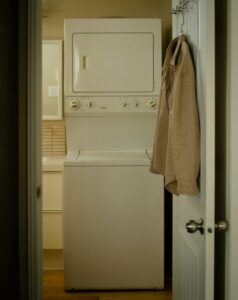Garbage disposals have become an essential part of modern kitchens, providing a convenient way to dispose of food waste and keep our sinks clean. However, like any other appliance, garbage disposals can experience glitches and malfunctions that can disrupt their functionality. Understanding the common issues that can arise with garbage disposals is crucial for homeowners to ensure their proper operation and avoid costly repairs.
Key Takeaways
- Garbage disposal clogs are a common household issue that can be easily prevented with proper maintenance.
- Common causes of clogs include putting non-food items down the disposal, overloading it with food waste, and not running enough water while using it.
- Signs of a clogged disposal include slow draining, unpleasant odors, and unusual noises.
- Tips for unclogging your disposal include using a plunger, baking soda and vinegar, or a disposal wrench.
- To prevent future clogs, avoid putting non-food items down the disposal, run cold water while using it, and regularly clean and maintain it.
Common Causes of Garbage Disposal Clogs
One of the most common issues with garbage disposals is clogging. Clogs can occur due to various reasons, including the disposal of food scraps, grease, and fibrous vegetables. Food scraps, such as fruit peels, coffee grounds, and eggshells, can accumulate in the disposal and cause blockages over time. Grease is another culprit that can solidify and stick to the walls of the disposal, leading to clogs. Fibrous vegetables like celery and corn husks can wrap around the blades of the disposal, causing it to jam.
These items can damage the disposal by causing it to work harder than necessary or by obstructing the blades’ movement. Over time, this can lead to motor burnout or damage to the disposal’s internal components. It is important to be mindful of what goes down the garbage disposal to prevent clogs and extend its lifespan.
How to Identify a Clogged Garbage Disposal
Recognizing when your garbage disposal is clogged is crucial for addressing the issue promptly and preventing further damage. Some common signs of a clogged garbage disposal include slow draining, gurgling noises coming from the sink, unpleasant odors, or water backing up into the sink. If you notice any of these signs, it is important to stop using the disposal immediately and take steps to unclog it.
Addressing a clogged garbage disposal promptly is essential because leaving it unattended can lead to more severe issues. A clog can put strain on the motor, causing it to overheat or burn out. Additionally, a clogged disposal can lead to leaks or damage to the plumbing system if the water cannot flow freely.
Tips for Unclogging Your Garbage Disposal
| Tips for Unclogging Your Garbage Disposal |
|---|
| 1. Turn off the power to the disposal before attempting to unclog it. |
| 2. Use tongs or pliers to remove any visible debris from the disposal. |
| 3. Pour a mixture of baking soda and vinegar down the disposal to break up any clogs. |
| 4. Use a plunger to try and dislodge any stubborn clogs. |
| 5. Use a plumbing snake to remove any clogs that cannot be dislodged with other methods. |
| 6. Avoid putting fibrous or starchy foods down the disposal to prevent future clogs. |
If you have identified a clogged garbage disposal, there are several DIY methods you can try before calling a professional. One common method is using a combination of baking soda and vinegar. Start by pouring half a cup of baking soda down the drain, followed by half a cup of vinegar. Let the mixture sit for a few minutes, then pour boiling water down the drain to flush out the clog.
Another method is using a plunger. Fill the sink with enough water to cover the rubber part of the plunger, then place the plunger over the drain and plunge vigorously for a few minutes. The suction created by the plunger can help dislodge the clog and restore proper drainage.
How to Prevent Future Clogs in Your Garbage Disposal
Preventing future clogs in your garbage disposal is essential for its optimal performance and longevity. One of the most important tips is to avoid putting grease down the drain. Grease can solidify and stick to the walls of the disposal, leading to clogs and unpleasant odors. Instead, allow grease to cool and solidify in a container, then dispose of it in the trash.
It is also important to avoid disposing of fibrous vegetables, such as celery or corn husks, down the garbage disposal. These items can wrap around the blades and cause them to jam. Instead, dispose of them in the trash or compost them.
Regular maintenance can also help prevent future clogs in your garbage disposal. Running cold water while using the disposal helps flush out any food particles and keeps the blades clean. Additionally, periodically grinding ice cubes or citrus peels can help remove any buildup and keep the disposal fresh.
Troubleshooting Motor Problems in Your Garbage Disposal

In addition to clogs, garbage disposals can also experience motor problems. Common motor issues include overheating, jamming, or complete failure. Overheating can occur if the disposal is overloaded or if the motor is working too hard to grind tough food scraps. Jamming can happen if foreign objects, such as silverware or small bones, get stuck in the disposal.
If you suspect a motor problem, it is important to troubleshoot the issue before it worsens. One common troubleshooting step is to press the reset button located on the bottom or side of the disposal. This can help reset the motor and restore its functionality. If the disposal is jammed, you can try using an Allen wrench to manually rotate the blades and dislodge any obstructions.
Signs of a Faulty Garbage Disposal Motor
Recognizing when your garbage disposal motor is malfunctioning is crucial for addressing the issue promptly and avoiding further damage. Some common signs of a faulty motor include unusual noises, such as grinding or humming sounds, a burning smell coming from the disposal, or the disposal not turning on at all.
If you notice any of these signs, it is important to stop using the disposal immediately and take steps to fix or replace the motor. Continuing to use a faulty motor can lead to more severe issues and potentially cause damage to other components of the garbage disposal.
How to Fix Motor Issues in Your Garbage Disposal
Fixing common motor issues in your garbage disposal can be done with some basic troubleshooting steps. If the motor has overheated, pressing the reset button located on the bottom or side of the disposal can help reset it and restore its functionality. If the motor is jammed, using an Allen wrench to manually rotate the blades and dislodge any obstructions can solve the problem.
However, if these troubleshooting steps do not resolve the motor issues, it may be necessary to call a professional for repairs. Attempting to fix complex motor problems without the proper knowledge and tools can be dangerous and may cause further damage to the disposal. A professional plumber or appliance repair technician will have the expertise to diagnose and fix motor issues safely and effectively.
Maintaining Your Garbage Disposal for Optimal Performance
Regular maintenance is essential for keeping your garbage disposal in good condition and ensuring its optimal performance. One important maintenance tip is to run cold water while using the disposal. Cold water helps solidify any grease or oil, making it easier for the disposal to grind and flush it out.
Periodically grinding ice cubes or citrus peels can also help keep the disposal clean and fresh. The abrasive action of the ice cubes helps remove any buildup on the blades, while the citrus peels help eliminate any unpleasant odors.
When to Call a Professional for Garbage Disposal Repairs
While many garbage disposal issues can be resolved with DIY methods, there are instances when it is best to call a professional for repairs. If you are unable to unclog your garbage disposal using DIY methods or if the motor is malfunctioning, it is recommended to seek professional help.
A professional plumber or appliance repair technician will have the knowledge, experience, and tools necessary to diagnose and fix complex issues safely and effectively. Additionally, hiring a professional for repairs can save you time and effort, as they will be able to quickly identify and resolve the problem.
In conclusion, understanding common issues that can arise with garbage disposals and knowing how to troubleshoot and maintain them is crucial for homeowners. By following the tips and instructions provided in this comprehensive guide, readers will be able to avoid common issues, keep their garbage disposals running smoothly, and extend their lifespan.
If you’re dealing with garbage disposal glitches, such as clogs and motor issues, you’ll definitely want to check out this helpful article from 911 Appliance. They provide expert tips and solutions for solving these common problems. Whether you’re facing a stubborn clog or a malfunctioning motor, their comprehensive guide will walk you through the steps to get your garbage disposal back up and running smoothly. Don’t let these issues disrupt your daily routine – click here to read the article and find the solutions you need.
– Can Inlet Valve Issues Cause Garbage Disposal Glitches?
Inlet valve issues can certainly cause garbage disposal glitches. If the inlet valve is clogged or malfunctioning, it can disrupt the entire system. When troubleshooting inlet valve issues, it’s important to address any blockages or damage in order to restore proper function to the garbage disposal.



